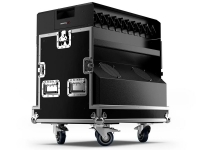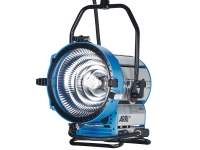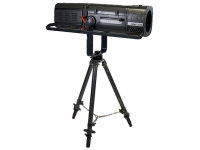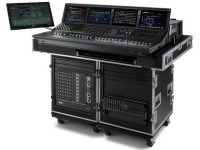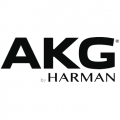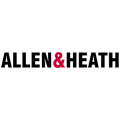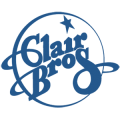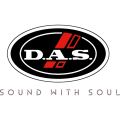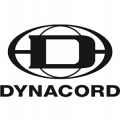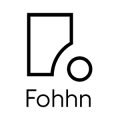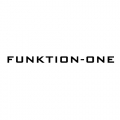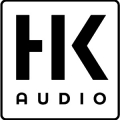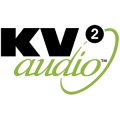ABOUT THE PRODUCT
ABOUT THE MANUFACTURER
GLOSSARY
VENUE S6L
A Revolution in Live Sound
Ready to take on any type of live production, Avid?s VENUE S6L puts one of the world's most powerful live mixing systems directly under your command. Sporting a robust E6L-192 engine and Avid's battle-tested VENUE software, the S6L provides you with the processing power to support system scalability, seamless Pro Tools integration, and onboard plug-ins, all with channel counts into the hundreds. That processing power culminates in a sleek, rugged 32-fader control surface that utilizes four multi-touchscreens and a customizable workflow to deliver a totally modern live-mixing experience. And since you can configure your system using a choice of industry-standard networking and I/O components (sold separately), you can easily integrate the VENUE | S6L into an existing PA system or employ it as the foundation of a new system tailored to meet the demands of any mixing scenario.
S6L control surface provides extensive mix control
Sporting four multi-touchscreens, four banks of eight faders, and three banks of 32 knobs, the VENUE | S6L control surface gives you the extensive mix control that modern live sound mixing demands. The Master multi-touchscreen gives you access to the Universe and other pages for main output processing, mix and matrix routing, and many other parameters. A trio of Channel Touch modules provide you with Meters view, various Channel views, and Parameter view. The Master Live central module gives you all the functions you need in a mixer's master section ? fader banking, monitoring, recallable fader layouts, user-assignable flex-faders, and more, including a dedicated transport section for easy recording control. Each Channel Fader module gives you eight faders with channel and dynamics meters, and channel name displays with easy-to-see high-resolution OLEDs. You'll also have all necessary channel controls at your fingertips including mute, solo, and safe functions. For total control of your sound, the Channel Knob modules provide 32 touch-sensitive, tri-color encoders for parameter control, individual OLED displays, a switch that allows selection of each knob individually and one that lets you insert or remove a knob's specific parameter from your signal path.
- Master multi-touchscreen
- Master Live central module
- 3 Channel Touch modules
- 4 Channel Fader modules with eight faders each (total of 32)
- 3 Channel Knob modules with 32 knobs each (total of 96)
E6L-192 mix engine is a processing powerhouse
Whether onstage or in a broadcast studio, live productions are more complex than ever, requiring truckloads of processing power to get the job done. The VENUE S6L's 192 channel-capable E6L-192 mix engine is up to the task and provides plenty of juice to spare. The E6L-192's state-of-the-art real-time processing engine handles all routing, channel, and mixing functions for maximum stability and power. And the HDX-powered DSP engine manages all AAX plug-in processing, with full automatic delay compensation. This allows you to create massive, great-sounding mixes with a plethora of processing channels and mix busses, all while experiencing tight, robust plug-in performance. And because all of the processing happens inside of the E6L-192, there are no round trips to external servers. This ensures amazingly low latency.
- Real-time processing engine handles mixing functions
- DSP engine manages AAX plug-in processing
- Full automatic delay compensation
- Amazingly low latency
More than your average stagebox
An integral part of the VENUE S6L, the Stage 64 rack goes beyond a mere stagebox. Offering more than just inputs and outputs, the Stage 64 has the tools and flexibility that professional engineers require to accomplish today's productions. The demands for more channels, better sound, and built-in recording capabilities abound in today's entertainment venues, houses of worship, broadcast productions, and professional AV environments. Avid's VENUE | S6L is the system that will move you away from a pieced-together system that barely works, and towards one that will serve as a solid foundation for growing productions and advancing technologies. The Stage 64 rack serves this goal with 64 microphone preamps that deliver great sound, clarity, warmth, and presence, along with 32 outputs for monitor mixes, aux-fed subs, and zone mixing, giving you the output flexibility to send audio virtually anywhere you desire.
- 64 great-sounding microphone preamps
- 32 ultra-flexible outputs
- Send audio virtually anywhere you need
Mix, match, and expand your system
With its ultra-scalable modular system architecture, the VENUE | S6L lets you mix and match your choice of control surfaces, engines, and I/O to support virtually any live sound application. You get 12 I/O card slots, two Ethernet AVB ports, and dual MADI outputs, giving you a direct split of all 64 inputs for a separate monitor mixer. You can add up to four HDX DSP expansion cards for more plug-in processing power, a Thunderbolt card to capitalize on the speed and high channel count of Thunderbolt connectivity, or a Dante card for compatibility with a multitude of sound reinforcement devices. You can connect several Stage 64 racks together for hundreds of I/O channels, or you can use its card slots to add a combination of analog and digital I/O, networked audio operations, or direct integration of your Aviom personal monitor system.
- Mix and match your choice of components
- 12 I/O card slots
- 2 Ethernet AVB ports
- 2 MADI outputs
- Add up to 4 HDX DSP cards
- Interface with Dante or Thunderbolt devices
- Connect additional Stage 64 racks for more I/O
Harness the power of VENUE live production software
The brain behind all of E6L's processing muscle is the VENUE live production software. If you're new to mixing with VENUE, you'll find that its straightforward tabbed-page architecture lets you navigate quickly and easily through the pages essential for routing and mixing. If you're already familiar with VENUE software, there's virtually no learning curve with the S6L system thanks to Avid's dedication to making your mix experience as uncomplicated as possible. And with increased-visibility updates to the interface, it's just as easy to mix an outdoor music festival in the full sun as it is inside a darkened theater. On top of that, VENUE software offers seamless integration with Pro Tools, providing you with incredibly powerful live recording capabilities. In fact, VENUE software automatically creates a Pro Tools session from your current VENUE show file, complete with all track names and patching, giving you simultaneous control over your live mixing and recording rigs.
- Straightforward tabbed-page architecture
- Navigate pages quickly and easily
- Highly visible, easy-to-see interface
- Seamless integration with Pro Tools for live recording
A wealth of plug-in processing power
When you mix on a VENUE S6L system, you have access to the same effects plug-ins that are used in the world's top recording studios. And you can use lots of them! Thanks to the S6L's HDX-powered DSPs, you've got enough processing power to polish and fine-tune each and every channel of your mix to perfection. Compatible with both Avid and third-party 64-bit AAX DSP plug-ins, the S6L ensures that you have an amazingly vast number of choices for effects and sound processing.
- HDX-powered effects processing
- Compatible with all AAX DSP plug-ins
- Fine-tune each and every channel to perfection
Massive mix bus capacity for powerful monitoring
Thanks to its massive mix bus capacity, the VENUE S6L system is able to handle dozens of stereo in-ear monitor mixes, wedge mixes, and backline mixes without breaking a sweat, all while providing immediate one-touch access to any mix on its faders. You get two independent stereo solo buses that are assignable to any physical output, so you can easily connect it to a cue belt pack and/or listen wedge. You also get two built-in headphone jacks on the S6L control surface.
- Handles dozens of stereo monitor mixes
- 1-touch access to any mix
- 2 independent stereo solo buses
- 2 built-in headphone jacks
Powerful features and steadfast reliability
You'll find Avid's VENUE systems powering the biggest tours, festivals, and installations in the world, thanks to their powerful features and steadfast reliability. The VENUES6L is no exception. These robust systems are built to take whatever you throw at them, and then some. You get redundant power supplies and network configurations in every component, so you never have to worry about downtime. Having professional production capabilities at your fingertips is more important than ever, so call your Sweetwater Sales Engineer to design the Avid VENUE S6L live mixing system that's right for you.
Professional used lighting equipment.| Professional second hand lighting equipment.| Professional pre owned lighting equipment.
Professional used audio equipment.| Professional second hand audio equipment.| Professional pre owned audio equipment.
Second hand audio gear. | Second hand lighting.
Pro audio equipment, second hand amplifiers, DJ, second hand sound systems, second hand Microphones, second hand Media Players.
Outdoor & Indoor LED screens for sale, LED mobile truck.
Light trussing, Gebrauchte Veranstaltungstechnik, used stage equipment Stage & Theatre lighting products.
Used AVID
Avid Technology is an American technology and multimedia company founded in August 1987 by Bill Warner, based in Burlington, Massachusetts. It specialises in audio and video; specifically, digital non-linear editing (NLE) systems, video editing software, audio editing software, music notation software, management and distribution services.
Avid products are now used in the television and video industry to create television shows, feature films, and commercials. Media Composer, a professional non-linear editing system, is Avid`s flagship product.Avid was founded by Bill Warner—a marketing manager from Apollo Computer. A prototype of their first non-linear editing system—the Avid Media Composer—was shown at the National Association of Broadcasters (NAB) convention in April 1988. The Avid was based on an Apple Macintosh II computer, with special hardware and software of Avid`s own design installed. The Avid was "the biggest shake-up in editing since Melies played with time and sequences in the early 1900s".By the early 1990s, Avid products began to replace such tools as the Moviola, Steenbeck, and KEM flatbed editors, allowing editors to handle their film creations with greater ease. The first feature film edited using the Avid was Let`s Kill All the Lawyers in 1992, directed by Ron Senkowski. The film was edited at 30fps NTSC rate, then used Avid MediaMatch to generate a negative cutlist from the EDL.The first feature film edited natively at 24fps with what was to become the Avid Film Composer was Emerson Park. The first studio film to be edited at 24fps was Lost in Yonkers, directed by Martha Coolidge. By 1994 only three feature films used the new digital editing system. By 1995 dozens had switched to Avid, and it signaled the beginning of the end of cutting celluloid. In 1996 Walter Murch accepted the Academy Award for editing The English Patient (which also won best picture), which he cut on the Avid. This was the first Editing Oscar awarded to a digitally edited film (although the final print was still created with traditional negative cutting).
In 1994 Avid introduced Open Media Framework (OMF) as an open standard file format for sharing media and related metadata. In recent years the company has extended its business expertise through several acquisitions and internal investments towards the full palette of multimedia generation products including those to store and manage media files. In 2006 Avid launched new products such as Avid Interplay and Unity Isis. Avid used to be considered just a "video editing" company, but now has consolidated a well-rounded multimedia generation technology company.
Professional used lighting equipment.| Professional second hand lighting equipment.| Professional pre owned lighting equipment.
Professional used audio equipment.| Professional second hand audio equipment.| Professional pre owned audio equipment.
Second hand audio gear. | Second hand lighting.
Pro audio equipment, second hand amplifiers, DJ, second hand sound systems, second hand Microphones, second hand Media Players.
Outdoor & Indoor LED screens for sale, LED mobile truck.
Light trussing, Gebrauchte Veranstaltungstechnik, used stage equipment Stage & Theatre lighting products.
Active: Powered. An active crossover is electrically powered and divides the line-level signal prior to amplification. An active speaker includes an active crossover and built-in amplifier.
Actuality: Audio from an announcer speaking.
Amplifier: A component that increases the gain or level of an audio signal.
Balanced Input: A connection with three conductors: two identical signal conductors that are 180 degrees out of phase with each other, and one ground. This type of connection is very resistant to line noise.
Bandpass: A two-part filter that cuts both higher and lower frequencies around a center band. A bandpass enclosure cuts high frequencies by acoustic cancellation and low frequencies by natural physical limitations on bass response.
Bandwidth: In audio, the range of frequencies a device operates within. In video, the range of frequencies passed from the input to the output. Bandwidth can also refer to the transmission capacity of an electronic communications device or system the speed of data transfer,is very important when planning a meeting for the attendees to stay connected.
Bass: Low frequencies; those below approximately 200 Hz.
Bi-Wiring: A method of connecting an amplifier or receiver to a speaker in which separate wires are run between the amp and the woofer and the amp and the tweeter.
Boost: To increase, make louder or brighter; opposite of attenuate.
Bridging: Combining two channels of an amplifier to make one channel that more powerful. One channel amplifies the positive portion of an audio signal and the other channel amplifies the negative portion, which are then combined at the output.
CD: Compact Disc. Ubiquitous digital audio format. Uses 16-bit/44.1-kHz sampling rate PCM digital signal to encode roughly 74 or 80 minutes of two- channel, full-range audio onto a 5-inch disc.
CD-R: Recordable Compact Disc.
CD-RW: Rewritable Compact Disc.
Channel: In components and systems, a channel is a separate signal path. A four-channel amplifier has at least four separate inputs and four separate outputs.
Coloration: Any change in the character of sound (such as an overemphasis on certain tones) that reduces naturalness.
Crossover: A component that divides an audio signal into two or more ranges by frequency, sending, for example, low frequencies to one output and high frequencies to another. An active crossover is powered and divides the line-level audio signal prior to amplification. A passive crossover uses no external power supply and may be used either at line level or, more commonly, at speaker level to divide the signal after amplification and send the low frequencies to the woofer and the high frequencies to the tweeter.
Crossover Frequency: The frequency at which an audio signal is divided. 80 Hz is a typical subwoofer crossover point and is the recommended crossover point in theatrical and home THX systems. Frequencies below 80 Hz are sent to the subwoofer signals above 80 Hz are sent to the main speakers.
Cut: To reduce, lower; opposite of boost.
Decibel (dB): A logarithmic measurement unit that describes a sound's relative loudness, though it can also be used to describe the relative difference between two power levels. A decibel is one tenth of a Bel. In sound, decibels generally measure a scale from 0 (the threshold of hearing) to 120-140 dB (the threshold of pain). A 3dB difference equates to a doubling of power. A 10dB difference is required to double the subjective volume. A 1dB difference over a broad frequency range is noticeable to most people, while a 0.2dB difference can affect the subjective impression of a sound.
Delay: The time difference between a sonic event and its perception at the listening position (sound traveling through space is delayed according to the distance it travels). People perceive spaciousness by the delay between the arrival of direct and reflected sound (larger spaces cause longer delays.
Diaphragm: The part of a dynamic loudspeaker attached to the voice coil that produces sound. It usually has the shape of a cone or dome.
Diffusion: In audio, the scattering of sound waves, reducing the sense of localization. In video, the scattering of light waves, reducing hot spotting, as in a diffusion screen.
Digital Audio Server: Essentially a hard drive, a digital audio server stores compressed audio files (like MP3 or WMA). Most include the processing to make the files, and all have the ability to play them back.
Direct-Stream Digital: A format for encoding high-resolution audio signals. It uses a 1-bit encoder with a sampling rate of 2,822,400 samples per second (verses 44,100 for CD). Used to encode six high-resolution channels on SACD.
Dispersion: The spread of sound over a wide area.
Distortion: Any undesired change in an audio signal between input and the output.
DNR: Dynamic Noise Reduction. A signal-processing circuit that attempts to reduce the level of high-frequency noise. Unlike Dolby NR, DNR doesn’t require preprocessing during recording.
Dolby B: A noise-reduction system that increases the level of high frequencies during recording and decreases them during playback.
Dolby C: An improvement on Dolby B that provides about twice as much noise reduction.
Dolby Digital: An encoding system that digitally compresses up to 5.1 discrete channels of audio (left front, center, right front, left surround, right surround, and LFE) into a single bitstream, which can be recorded onto a DVD, HDTV broadcast, or other form of digital media. When RF-modulated, it was included on some laser discs, which requires an RF-demodulator before the signal can be decoded. Five channels are full-range; the .1 channel is a band-limited LFE track. A Dolby Digital processor (found in most new receivers, preamps, and some DVD players) can decode this signal back into the 5.1 separate channels. Most films since 1992's Batman Returns have been recorded in a 5.1 digital format, though a number of films before that had 6-channel analog tracks that have been remastered into 5.1.
Dolby EX: An enhancement to Dolby Digital that adds a surround back channel to 5.1 soundtracks. The sixth channel is matrixed from the left and right surround channels. Often referred to as 6.1. Sometimes referred to as 7.1 if the system uses two surround back speakers, even though both speakers reproduce the same signal. Software is backwards-compatible with 5.1 systems, but requires an EX or 6.1 processor to obtain additional benefit.
Dolby Pro Logic: An enhancement of the Dolby Surround decoding process. Pro Logic decoders derive left, center, right, and a mono surround channel from two-channel Dolby Surround encoded material via matrix techniques.
Dolby Pro Logic II: An enhanced version of Pro Logic. Adds improved decoding for two-channel, non-encoded soundtracks and music.
Driver: A speaker without an enclosure; also refers to the active element of a speaker system that creates compressions and rarefactions in the air.
DSP: Digital Signal Processing. Manipulating an audio signal digitally to create various possible effects at the output. Often refers to artificially generated surround effects derived from and applied to two-channel sources.
DTS: Digital Theater Systems. A digital sound recording format, originally developed for theatrical film soundtracks, starting with Jurassic Park. Records 5.1 discrete channels of audio onto a handful of laser discs, CDs, and DVDs. Requires a player with DTS output connected to a DTS processor.
DTS ES: An enhanced version of the 5.1 DTS system. Like Dolby’s Surround EX, a sixth channel is added. In some cases (DTS ES Discrete), the sixth channel is discrete. Software is backwards-compatible with 5.1 systems, but requires an ES or 6.1 processor to obtain additional benefit. Neo: 6 is a subset of DTS ES that creates 6.1 from material with fewer original channels.
Dynamic Range: The difference between the lowest and the highest levels; in audio, it’s often expressed in decibels. In video, it’s listed as the contrast ratio.
Professional used lighting equipment.| Professional second hand lighting equipment.| Professional pre owned lighting equipment.
Professional used audio equipment.| Professional second hand audio equipment.| Professional pre owned audio equipment.
Second hand audio gear. | Second hand lighting.
Pro audio equipment, second hand amplifiers, DJ, second hand sound systems, second hand Microphones, second hand Media Players.
Outdoor & Indoor LED screens for sale, LED mobile truck.
Light trussing, Gebrauchte Veranstaltungstechnik, used stage equipment Stage & Theatre lighting products.

